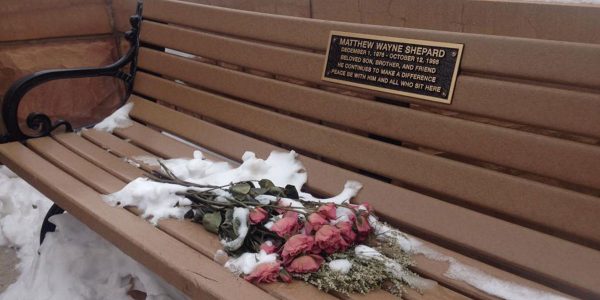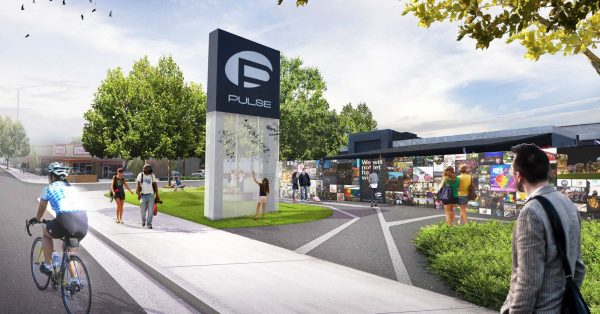In light of the recent gun violence that took place at STEM High School in Highlands Ranch, Colorado on May 8, 2019, the PLHC would like to offer anyone affected by those events a content warning on the blog post below, which details instances of gun violence against youth and young adults, specifically LGBTQ+ individuals.
The Pulse Nightclub Shooting
The clock strikes two a.m. at a gay nightclub in Orlando. Suddenly, bullets and screams drown out the music. People fall to the ground, blood spraying across the floor. A man is shot in the leg three times, and pretends to be dead in the hope his life will be spared. The woman next to him is shot. It will all be over in a second. Yet it isn’t over, not in a second, not in a year. It isn’t over because that man survived. That night is etched in Angel Colon’s memory as a survivor of the 2016 shooting at Pulse nightclub in Orlando, Florida.
Everyone has moments that they will remember forever. Some remember the assassination of John F. Kennedy, others the events of 9/11. Monuments and memorials mark those tragic, transformative moments in American history. The survivors of the Pulse shooting in Orlando do not yet have that permanent testament.
Memorials and monuments tell America’s story to the public, and influence the way history is remembered. Recognizing these stories is vital, especially if the story represents marginalized peoples’ voices. In the instance of Pulse and other sites related to violence against LGBTQ+ people, the LGBTQ+ community’s perspective awaits recognition from America’s public agencies.
Matthew Shepard’s Legacy in LGBTQ+ History
On the evening of October 6, 1998, Matthew Shepard lay tied to a fence after being struck approximately twenty times “in the head with the butt of a .357-caliber Magnum Smith & Wesson pistol.” The trauma resulted in his death. Matthew Shepard was a gay student at the University of Wyoming. Two hours earlier, two men claiming to be gay had approached him. The men coaxed Shepard to the fence where they beat him, robbed him, and left him dying in the snow. [1]
This hate crime rocked the country, attracting international media attention and causing a massive push for LGBTQ+ tolerance and more progressive hate crime legislation. Despite the importance of his story, the only memorial to Shepard does not mention the circumstances of his death. A decade after Shepherd’s murder, the University of Wyoming installed a memorial bench outside the university’s Arts and Science building. Below is an image of the message attached to the bench.

The omission drew international activism focused on promoting LGBTQ+ inclusivity and acceptance. However, the fence located at the site of Shepard’s death is gone. Some believe it vanished because local residents did not want the structure to become a permanent memorial or monument. Regardless of the motivation, that change erased history. No permanent site marks Shepard’s legacy. This silence makes it easy for the public to forget.
Professor Rebecca Hilliker, recalls, “A lot of people in the community went through a sense of grief, in a very poignant, heartfelt, painful way, and I think eventually the pain became so great that they don’t want to think about it or hear about it.” [2] Though painful, it is vital that Shepard’s story is told nationally. National recollection his story is crucial for LGBTQ+ people, over 50% of whom have experienced slurs, harassment, employment discrimination, or violence. [3]
Stonewall National Monument
Some recognition of LGBTQ+ stories has taken over the past thirty years. In 2016, Christopher Park, located across the street from the historic Stonewall Inn in New York City, became a national monument. The inn itself became a National Historic Landmark in 1999. The building that houses the Stonewall Inn remains under private ownership and is an operating bar to this day. The two properties are both significant to LGBTQ+ history. In 1969, LGBTQ+ people rioted against a police raid at the inn. The uprising spilled across the street into nearby Christopher Park. The Stonewall uprising began the tradition of holding gay pride parades in June. Parades now take place across the nation, as well as internationally.
The monument is a model for telling LGBTQ+ stories on public lands in partnership with local communities. President Barack Obama created Stonewall National Monument under the American Antiquities Act with an executive order. Since the monument was instated, the National Park Foundation partnered with the National Park Service and local community organizations to develop “education programs for local New York City students that focus on anti-bullying, civil rights, and activism.” [4] The National Parks Conservation Association is now seeking to elevate the monument to a national park. Stonewall National Monument has successfully brought together local and national stakeholders to tell their stories.
Remembering Pulse
At the time, the PULSE shooting was the deadliest in American history. It attracted international attention. The Eiffel Tower glowed with rainbow colored lights and major cities in dozens of countries held vigils. The world will never forget Pulse.
Or will it?
Initially Matthew Shepard’s death received similar attention, yet his legacy is now fading in the nation’s memory. Many believe that establishing memorials or monuments can help make these kinds of stories more permanent. However, not all memorials tell their stories well. In contrast with Matthew Shepard’s memorial, Stonewall National Monument is an example of proper storytelling around difficult history. However, it must be acknowledged that Stonewall’s success is due to a motivated group of public supporters, a sympathetic presidential administration, and a moment in NPS history that values LGBTQ+ stories.
A site must meet one of various criteria to allow the National Park Service to designate it as a national historic landmark. In the case of the Stonewall Inn, the National Park Service instated the Inn under Criterion 1. Criterion 1 states that sites much be “associated with events that have made a significant contribution to… broad national patterns of United States history…” [5] The Pulse nightclub shooting reflects a pattern of LGBTQ+ discrimination, and one of gun violence in public places. Pulse and the people who lost their lives in the shooting deserve a permanent place in the American historical landscape.
Commemorating LGBTQ+ History Locally and Nationally
Barbara Poma, the nightclub’s owner, formed the OnePULSE Foundation after the shooting. The non-profit organization is trying to give Pulse the recognition it deserves. Partnerships with the City of Orlando, Orange County, and other organizations are helping bring their goal closer to reality. However, the Pulse nightclub shooting was of national significance. The site should be a national historic site so it access resources and support to ensure the site is permanently protected and preserved.

As of the publication of this post, OnePULSE Foundation has created the Pulse Interim Memorial and is in the process of creating a permanent memorial and museum. The foundation has announced that they will only move forward with designing and building the memorial once they have collected information from survivors of the shooting and the family members of those lost. [6]
Though a step in the right direction, local memorials have less overall impact than national memorials. Ideally, like Stonewall, the final management of the Pulse Nightclub memorial would involve both national and local interests, combining local perspectives and accounting for the community’s need to mourn lost friends and family members with national-level resources, expertise, and impact.
According to Alexandra Hernandez, National Park Service National Heritage Areas Regional Coordinator, local communities are important partners in establishing national monuments. Community members can reach out to the National Park Service or to their congressional delegates if they believe a story or a place hasn’t been given proper recognition. According to Hernandez, national historic sites are the “nation’s story tellers.” It is in the public’s hands to determine what stories we tell and how we tell them.
To help, you can reach out to the National Park Service, politicians local to Orlando, or the OnePULSE Foundation itself. Tell them you believe there should be a national historic site in remembrance of the Pulse nightclub shooting.
-Christopher Hendrie, High School Contributor
Published 07/12/2019
Sources
[1] Jason Marsden, “The Murder of Matthew Shepard,” Wyohistoryorg Encyclopedia, November 8, 2014, https://www.wyohistory.org/encyclopedia/murder-matthew-shepard
[2] Patrick Healy, “Laramie Killing Given Epilogue a Decade Later,” The New York Times, Septemer 16, 2008, https://www.nytimes.com/2008/09/17/theater/17laramie.html
[3] Discrimination in America: Experiences and Views of LGBTQ Americans, NPR Robert Wood Johnson Foundation, Harvard T.H. Chan School of Public Health, November 2017, https://www.npr.org/documents/2017/nov/npr-discrimination-lgbtq-final.pdf
[4] Danielle Grieser and Emily Kamin, “Celebrating a Lasting Pride in Your Parks,” National Park Foundation, May 16, 2019, https://www.nationalparks.org/connect/blog/celebrating-lasting-pride-your-parks
[5] “Section IX: How to Apply the National Register Criteria for Evaluation, National Register of Historic Places Bulletin (NRB 15),” National Parks Service, https://www.nps.gov/nr/publications/bulletins/nrb15/nrb15_9.htm
[6]”Memorial Process,” OnePULSE Foundation, May 31, 2018, accessed July 12, 2019, https://onepulsefoundation.org/onepulse-foundation-memorial/memorial-process/